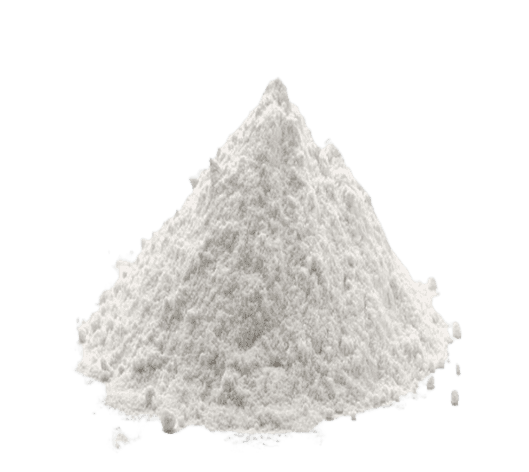PVC is Poly Vinyl Chloride, the most commonly used polymer in the world of pipes, tubes, fittings, windows, flooring, etc. It is a thermoplastic polymer (moldab...

Get Prices for Bulk Deals!
PVC Bytes
Daily Market Report
View MoreSimilar Products
View MorePVC Tenders
| Product | Type | Brand | Location | Grade | Dispatch Type | Price | Last Updated |
|---|---|---|---|---|---|---|---|
| PVC | K57 | ASNYL | Mundra | FJ57 | Ready Material | INR 65,250 /MT | 27 Nov 2025 |
| PVC | K67 | SINOPEC | Chennai | S1000 | Ready Material | INR 64,000 /MT | 27 Nov 2025 |
Blogs & Insights
PVC stands for Polyvinyl Chloride. It is basically one of the most commonly used types of plastic. PVC's adaptability makes it a top choice for industries requiring both performance and affordability. In India, PVC is getting more important because cities are growing fast, and there’s a lot of construction going on. Farmers also use it for irrigation, so it’s not just for buildings.
Known for its durability, ease of use, and cost-effectiveness, PVC is found in a wide array of applications, ranging from construction materials to medical devices and consumer products. It’s found in pipes, wires, floors, windows, and even medical tubes.
PVC is made by polymerizing something called vinyl chloride monomers. It can be either rigid or flexible, depending on how it’s made. The rigid one (called uPVC) is used for things like pipes and window frames. It’s basically used for anything that needs to be sturdy because it’s strong and doesn’t bend. Flexible PVC, on the other hand, is softer because it has plasticizers mixed in. That’s the kind used in wires, medical tubing, and even synthetic leather.
One of the reasons PVC is so useful is that it doesn’t rust, doesn’t break easily, and can handle chemicals and fire better than other materials.
Key Properties of PVC
The properties of PVC play a crucial role in its broad applicability. Below are some of the key characteristics that make PVC a popular material choice:
- Durability: PVC is highly resistant to impact, abrasion, and environmental stress, which ensures longevity in products.
- Chemical Resistance: It doesn’t react to acids, oils, or other chemicals that would normally damage materials. So it’s ideal for use in the chemical and plumbing industries.
- Fire Resistance: Unlike some plastics, PVC doesn’t catch fire easily. It is inherently flame-retardant, reducing the risk of fire in buildings and structures.
- Flexibility: When combined with plasticizers, PVC can be made flexible, making it suitable for cables, films, and flooring.
- Low Maintenance: Unlike metal, it doesn’t rust. So, cleaning and maintaining it is easy. This is why it’s used so much in homes and hospitals.
Industrial Applications of PVC
- Construction Industry: One of the biggest uses of PVC is in the construction industry. Buildings use tons of PVC. For example, pipes for plumbing, frames for doors and windows, flooring, roofing, etc. It is waterproof and easy to install, which makes it great for plumbing and electrical work.
- Electrical Industry: PVC is commonly used for insulating wires and cables, offering protection from electrical hazards and environmental factors like moisture and UV radiation.
- Healthcare and Medical Devices: Hospitals use PVC in medical tubes, blood bags, and masks. That is because it’s safe, strong, and easy to sterilize.
- Packaging: PVC films and sheets are commonly used for packaging purposes. Their transparency, strength, and ability to preserve product freshness make them ideal for food packaging, blister packs, and more.
- Consumer Products: PVC is used in synthetic leather, furniture, toys, and even raincoats. It’s cheap and lasts a long time, which is why so many everyday items use it.
PVC Market Trends and Supply Chain
Right now, India’s PVC market is booming. In 2024, the PVC pipes market was worth around $5.25 billion. And by 2030, it’s expected to be worth about $7.43 billion. That will be a compound annual growth rate (CAGR) of 5.79%.
The growth is primarily attributed to rapid urbanization. More buildings, better infrastructure, and thus a growing PVC demand. PVC pipes are especially in demand for water supply, sewage, and drainage because they last a long time and don’t rust.
The Indian government is also pushing for more construction with programs like "Housing for All" and "Smart Cities Mission," which is making PVC even more important. Even in farming, programs like PMKSY (Pradhan Mantri Krishi Sinchayee Yojana) are increasing the use of PVC irrigation pipes.
South India dominates the PVC pipes market due to factors such as heavy reliance on agriculture and significant infrastructure development. The region's demand for PVC pipes is driven by applications in irrigation, water supply, and sewage systems.
But not everything is smooth sailing. PVC prices change a lot. There’s also some government regulation involved. India has extended the deadline for the BIS certification for imported PVC until June 2025. This means companies importing PVC have more time to get their certification, but it also affects supply and pricing.
Lately, people are also focusing on making PVC more eco-friendly. Since PVC is recyclable and has a lower carbon footprint than some metals, it’s getting more attention as a sustainable option.
Another trend is the rising demand for medical-grade PVC, which is being used in things like IV bags and oxygen masks.
Innovations in processing methods, such as PVC co-extrusion and blending with other polymers, are enhancing the versatility of PVC in different applications.
India’s PVC demand is largely met through imports, as domestic production is not sufficient to cover the expanding market. Despite this, the PVC market in India is poised for continued growth.
PVC Prices
PVC prices depend a lot on crude oil, since it’s made from petroleum-based chemicals. If oil prices go up, PVC prices do too. For example, in the beginning of 2025, PVC prices in India ranged from Rs 65,000 to Rs 85,000 per mt. If crude oil prices rise or imports slow down, you’ll see these numbers jump.
PVC price today also keeps changing depending on demand and supply chain issues. PVC rates are often linked to the LME (London Metal Exchange) price of raw materials, making it important for buyers to track price movements for strategic procurement. That’s why businesses keep a close eye on PVC rates before making big purchases.PVC Historical Prices
Historically, PVC prices have gone up and down a lot because of changes in the petrochemical industry. When construction activity is high, PVC prices usually go up. If crude oil becomes expensive, PVC prices rise. And if major PVC factories slow down production or shut down, it affects the supply and increases prices. Looking at past trends can help businesses predict what might happen next.
PVC Rates Today
Nexizo provides live tracking of PVC rates to help businesses make informed purchasing decisions. Since PVC rates change daily depending on how much is available and how many people want it, tracking it is important.
PVC Price Forecast
Looking ahead, PVC prices are expected to remain volatile due to fluctuations in Ethylene and Vinyl Chloride Monomer (VCM) prices, government infrastructure push, import regulations and supply chain disruptions. Analysts predict a long term increase in PVC prices due to strong demand in the housing and industrial sectors.
Factors that Influence PVC Prices in India
There are several reasons why PVC prices keep changing in India:
- Raw Material Prices: Since India imports a lot of its raw materials, global price changes in materials like ethylene and chlorine directly impact PVC costs.
- Demand in Key Industries: Since construction companies buy so much PVC, their activity has a huge effect on prices. More construction means higher prices, while slowdowns can bring prices down.
- Government Policies and Trade Tariffs: Import tariffs, subsidies, and policies related to PVC recycling and environmental impact can affect prices in India.
- Global Supply Chain Disruptions: Due to the global nature of PVC production and distribution, disruptions such as natural disasters, shipping delays, or geopolitical tensions can lead to short-term price increases.
Get the Best PVC Prices Today on Nexizo
If you are looking to buy PVC, you need real-time polyvinyl chloride price updates and good deals. That’s where Nexizo comes in. Nexizo helps businesses track PVC price today, find the best rates, and get fast delivery. It provides PVC from various brands, like Mexichem, Xinfa and Westlake, among others. Some of the popular and high-quality grades like SG5, TK700, HS1000R, and LS100H are also available.
PVC prices can be unpredictable, but Nexizo makes it easier to buy smart and save money. So, check out the best deals on PVC today. And if you are also looking for PVC tenders, Nexizo’s AI-powered platform can help you find the best opportunities.

%2Fhttps%253A%252F%252Fofbadmin.s3.ap-southeast-1.amazonaws.com%252Fnexizo%252Fproduction%252Fstrapi%252FPolymer_425b662378.png&w=3840&q=75)
%2Fhttps%253A%252F%252Fofbadmin.s3.ap-southeast-1.amazonaws.com%252Fnexizo%252Fproduction%252Fstrapi%252FPolymer_6_d2c14e4ff6.png&w=3840&q=75)
%2Fhttps%253A%252F%252Fofbadmin.s3.ap-southeast-1.amazonaws.com%252Fnexizo%252Fproduction%252Fstrapi%252FPolymer_3_ac8ca392fc.png&w=3840&q=75)
%2Fhttps%253A%252F%252Fofbadmin.s3.ap-southeast-1.amazonaws.com%252Fnexizo%252Fproduction%252Fstrapi%252FPolymer_1_78b0af3fdb.png&w=3840&q=75)
%2Fhttps%253A%252F%252Fofbadmin.s3.ap-southeast-1.amazonaws.com%252Fnexizo%252Fproduction%252Fstrapi%252FPolymer_5_41ac01de92.png&w=3840&q=75)
%2Fhttps%253A%252F%252Fofbadmin.s3.ap-southeast-1.amazonaws.com%252Fnexizo%252Fproduction%252Fstrapi%252FHDPEPE_100_Ready_Material_e3a92491ae.png&w=3840&q=75)
%2Fhttps%253A%252F%252Fofbadmin.s3.ap-southeast-1.amazonaws.com%252Fnexizo%252Fproduction%252Fstrapi%252FPPHP_Films_Ready_Material_10d55911b7.png&w=3840&q=75)
%2Fhttps%253A%252F%252Fofbadmin.s3.ap-southeast-1.amazonaws.com%252Fnexizo%252Fproduction%252Fstrapi%252FPPCP_Films_Ready_Material_a09070dd37.png&w=3840&q=75)
%2Fhttps%253A%252F%252Fofbadmin.s3.ap-southeast-1.amazonaws.com%252Fnexizo%252Fproduction%252Fstrapi%252Flldpe1_5d71e3813a.png&w=3840&q=75)
%2Fhttps%253A%252F%252Fofbadmin.s3.ap-southeast-1.amazonaws.com%252Fnexizo%252Fproduction%252Fstrapi%252FPET_81_84_Ready_Material_9021c2cdf4.png&w=3840&q=75)
%2Fhttps%253A%252F%252Fofbadmin.s3.ap-southeast-1.amazonaws.com%252Fnexizo%252Fproduction%252Fstrapi%252F03_Seasonal_Sourcing_Strategies_to_Beat_Price_Volatility_in_Polymers_2d367ed2b9.png&w=750&q=90)
%2Fhttps%253A%252F%252Fofbadmin.s3.ap-southeast-1.amazonaws.com%252Fnexizo%252Fproduction%252Fstrapi%252F4_What_are_the_differences_between_CPVC_and_PVC_pipes_66879f8856.png&w=750&q=90)
%2Fhttps%253A%252F%252Fofbadmin.s3.ap-southeast-1.amazonaws.com%252Fnexizo%252Fproduction%252Fstrapi%252F3_What_are_the_advantages_of_using_PVC_products_in_construction_and_infrastructure_d00fb732d7.png&w=750&q=90)
%2Fhttps%253A%252F%252Fofbadmin.s3.ap-southeast-1.amazonaws.com%252Fnexizo%252Fproduction%252Fstrapi%252F2_What_are_the_key_benefits_of_using_rigid_PVC_profiles_for_industrial_applications_c8a7c521ba.png&w=750&q=90)
%2Fhttps%253A%252F%252Fofbadmin.s3.ap-southeast-1.amazonaws.com%252Fnexizo%252Fproduction%252Fstrapi%252F5_Impact_of_New_GST_Reforms_on_Raw_Materials_Supply_Chains_5ef71e97ad.png&w=750&q=90)
%2Fhttps%253A%252F%252Fofbadmin.s3.ap-southeast-1.amazonaws.com%252Fnexizo%252Fproduction%252Fstrapi%252FPolymer_Buyer_s_Guide_Identifying_PVC_PET_and_PE_Materials_100_083a499116.jpg&w=750&q=90)
%2Fhttps%253A%252F%252Fofbadmin.s3.ap-southeast-1.amazonaws.com%252Fnexizo%252Fproduction%252Fstrapi%252F19_From_Where_Do_Indian_Pipe_Manufacturers_Source_Their_Raw_Materials_3x_66336bde48.png&w=750&q=90)
%2Fhttps%253A%252F%252Fofbadmin.s3.ap-southeast-1.amazonaws.com%252Fnexizo%252Fproduction%252Fstrapi%252F03_PVC_Price_Trends_and_Forecast_Monthly_Quarterly_Yearly_Data_2024_2025_2x_dad268bc4a.png&w=750&q=90)
%2Fhttps%253A%252F%252Fofbadmin.s3.ap-southeast-1.amazonaws.com%252Fnexizo%252Fproduction%252Fstrapi%252F12_A_Comprehensive_Guide_to_Polymers_Understanding_PC_PVC_ABS_and_TPE_1f01b25cd9.png&w=750&q=90)
%2Fhttps%253A%252F%252Fofbadmin.s3.ap-southeast-1.amazonaws.com%252Fnexizo%252Fproduction%252Fstrapi%252F04_What_is_CPVC_Full_Form_Composition_and_Key_Applications_c686082668.png&w=750&q=90)
%2Fhttps%253A%252F%252Fd86af0gufpxog.cloudfront.net%252Funsafe%252Fadaptive-fit-in%252Fhttps%25253A%25252F%25252Fnexizo.ai%25252Fassets%25252Fved.png&w=128&q=75)